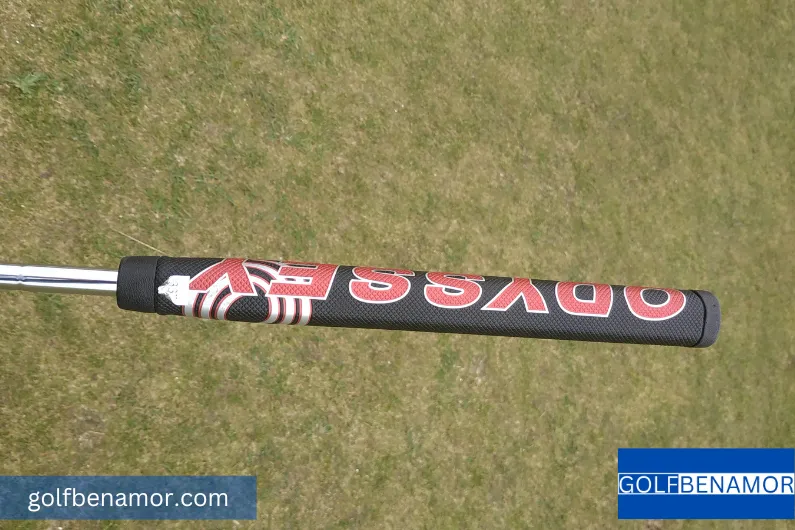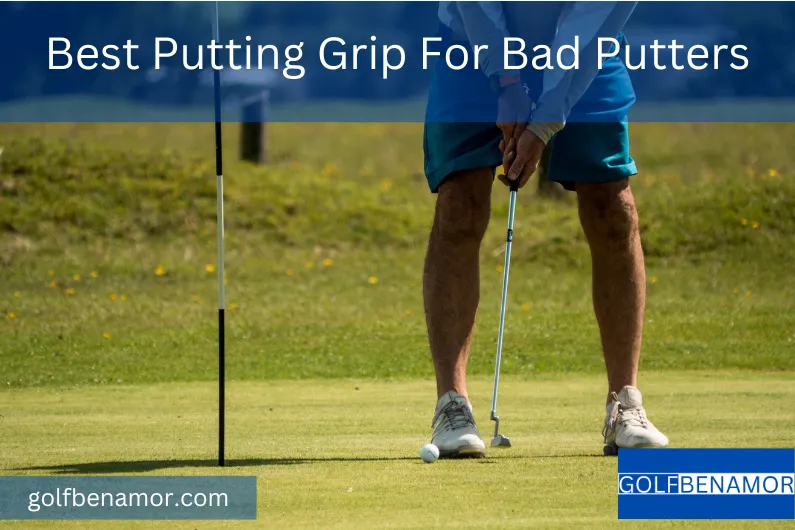Best Putting Grip For Bad Putters
Struggling to get the golf ball to drop in the hole? Improve your performance on the putting green by changing to a less conventional grip like the ones discussed below.
Are You A Bad Putter?
We all get a little down on ourselves from time to time when the ball isn’t going where we want. If you find yourself struggling to strike the middle of the putter face or keep missing those short ones we all need to make then you may need to look at changing your grip to improve your putting statistics.
If you currently use a standard grip or perhaps just a simple revers overlap then you might want to give one of the following grips a try.
The Claw
An increasingly popular putting style is the claw. Unlike the traditional style of grip, where the golfer places both hands in a regular grip on the putter, the claw grip involves positioning the hands in a slightly different way. With the claw grip, the golfer anchors the top hand on the club with the index and middle fingers pointed down the shaft, resembling a claw. The bottom hand is placed in a more neutral position.
This grip allows for better control and stability during the putting stroke. Additionally, the claw grip can help reduce grip pressure, which is beneficial for a smoother stroke. Some golfers find that the claw grip helps them with alignment and squaring the putterface at impact. However, it’s important for each golfer to find a grip that works best for their putting style and personal preference. Experimenting with different grips can help improve putting performance on the golf course.
The Cross-Handed or Lead Hand Low
The cross-handed or lead-hand low grip is a popular style. In this grip, you must place your dominant hand lower on the grip of the putter with their non-dominant hand higher up. This technique is also known as the left-hand low putting grip. Unlike the traditional grip where the dominant hand is on top of the grip, the cross-handed grip allows for better control and stability during the putting stroke.
It is said to promote a more consistent and fluid putting style. To use this grip, the golfer simply needs to grip the putter with their dominant hand placed at the top of the grip and their non-dominant hand placed lower down. By adopting this method, they can enhance their putting accuracy and distance control. Many professionals have found success using the cross-handed putting grip.
The Pencil or Pen
The pencil grip involves holding the putter similar to how one would hold a pencil, with all fingers on one side of the shaft. This grip offers a more traditional and comfortable feel to many. On the other hand, the claw grip involves positioning the index finger extended down the shaft, reminiscent of a claw-like shape, while the other fingers wrap around the grip.
This grip is known for providing stability and increased control over the putter head during the stroke. Ultimately, the choice of putting grip is a personal preference and varies from player to player. Regardless of the grip chosen, what matters most is consistent execution and maintaining a steady putter head throughout the putting stroke.
The Arm Lock And Wrist Lock
The arm lock and WristLock putting grips have become increasingly popular among players looking to improve their putting technique. These grip styles involve a different way of holding the putter, with the goal of creating a more stable and repeatable stroke. With the arm lock grip, the golfer pushes the grip of the putter up against their lead arm, effectively “locking” it in place.
This helps to reduce wrist movement during the stroke, resulting in a more consistent and accurate putting motion. The wrist lock grip, on the other hand, involves placing the grip of the putter in the crease of the lead wrist, providing a similar stabilizing effect.
Both of these grips allow you to control the putter face more effectively, leading to better distance control and alignment. While some players find these grips unconventional or uncomfortable at first, many have experienced significant improvements in their putting performance after adopting this unique grip.
In addition to they way you hold your putter the type of grip fitted can have an impact on how well you putt.

What is the difference between standard, midsize and oversized putting grips?
The main difference between standard, midsize, and oversized putting grips lies in their sizes. A standard putting grip is the most common and typically has a diameter of around 1 inch. It is suitable for players with average hand sizes and allows for a neutral grip posture, promoting a smoother and more controlled stroke. On the other hand, a midsize putting grip has a slightly larger diameter, typically around 1.25 inches.
This size is often preferred by players with larger hands as it offers more surface area to grip and can help reduce unwanted wrist action during the stroke. Lastly, an oversized putting grip has a diameter of over 1.5 inches. It is often used by players who struggle with hand and wrist control, as the larger grip promotes a steadier grip and less hand manipulation.
Who are oversized putter grips designed for?
Oversized putter grips are designed for golfers who struggle with their putting stroke and need extra stability and control. These grips are typically larger in diameter compared to standard grips. The increased size and weight of the oversized putter grip help to minimize wrist movement during the putting stroke, promoting a more consistent and accurate shot.
Those with larger hands or who prefer a stronger grip on the club also benefit from oversized grips. The larger surface area of the grip distributes the pressure evenly across the hands, reducing the risk of developing hand fatigue or discomfort during long putting sessions. Overall, oversized putter grips cater to golfers looking to improve their putting performance by offering enhanced stability, control, and a more comfortable grip on the putter.
An oversize grip can also be a great option if you suffer from arthritis.
Are some putter grips designed specifically for different gripping styles?
Yes, some grips are designed specifically for different gripping styles. The grip style of a golfer can greatly impact their stroke and overall performance on the green. Therefore, grip manufacturers have recognized the importance of catering to different grip preferences. For instance, a player who prefers a traditional putting grip, where the palms face each other and the grip is held more in the fingers, may benefit from a grip that has a thinner profile and promotes a lighter grip pressure.
On the other hand, a golfer who uses a claw grip, where the palm faces away from the target, may find a thicker grip with more pronounced contours more suitable. Some grips even have alignment aids or textures to further enhance a golfer’s grip and feel. By offering a variety of options, manufacturers allow golfers to choose a grip that suits their individual preferences and helps them achieve a more consistent and confident putting stroke.
What is counter-weighting on a putting grip, and how can it help my putting?
Counter-weighting on a putting grip refers to the process of adding weight to the grip end of the putter. This can be done by using a heavier grip or by adding additional weights to the grip. The purpose of counter-weighting is to balance the putter and create a more stable and controlled stroke.
By adding weight to the grip end, it counterbalances the weight of the putter head, reducing any unwanted twisting or rotation during the putting motion. This promotes a smoother and more consistent stroke, resulting in improved accuracy and distance control. The counter-weighting technique can also help golfers who struggle with anxiety or nerves during their putting stroke. The added weight in the grip can provide a calming effect and increase stability, allowing the golfer to execute their stroke more confidently.
Overall, counter-weighting on a grip is a valuable technique that can greatly enhance a golfer’s putting performance and is often considered as one of the best putting grip methods available.
What putter grip do the pros use?
When it comes to their putters, there is no one-size-fits-all solution for professionals. Each golfer has a unique preference and style when it comes to grips. However, there are certain types of putter grips that are popular among the pros. One of these is the traditional grip, also known as the reverse overlap grip.
This grip involves placing the left hand above the right hand (for right-handed golfers) with the thumbs slightly pointing towards the target. Another popular option is the cross-handed grip, where the left hand is placed below the right hand (for right-handed golfers). This grip helps promote a smoother stroke and eliminates the potential for wrist breakdown.
Additionally, some professionals use the claw grip, which involves using the left hand in a more dominant position on the club grip. Ultimately, the choice of putter grip depends on the individual golfer’s comfort and what works best for their stroke.
Who Makes The Best Putter Grips?
Most people probably go for SuperStroke, Winn or possibly Golf Pride when looking for a new putter grip.
Best Putting Grip For Bad Putters: Conclusion
Try experimenting with different styles of grip to see which one gives you the best results. Don’t forget to try fitting a new grip to an old putter to try some of them out maybe.




